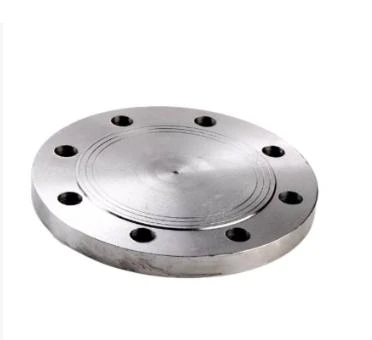-
Cangzhou Yulong Steel Co., Ltd.
-
Phone:
+86 13303177267 -
Email:
admin@ylsteelfittings.com
- English
- Arabic
- Italian
- Spanish
- Portuguese
- German
- kazakh
- Persian
- Greek
- French
- Russian
- Polish
- Thai
- Indonesian
- Vietnamese
- Zulu
- Korean
- Uzbek
- Hindi
- Serbian
- Malay
- Ukrainian
- Gujarati
- Haitian Creole
- hausa
- hawaiian
- Hebrew
- Miao
- Hungarian
- Icelandic
- igbo
- irish
- Japanese
- Javanese
- Kannada
- Khmer
- Rwandese
- Afrikaans
- Albanian
- Amharic
- Armenian
- Azerbaijani
- Basque
- Belarusian
- Bengali
- Bosnian
- Bulgarian
- Catalan
- Cebuano
- China
- China (Taiwan)
- Corsican
- Croatian
- Czech
- Danish
- Esperanto
- Estonian
- Finnish
- Frisian
- Galician
- Georgian
- Kurdish
- Kyrgyz
- Lao
- Latin
- Latvian
- Lithuanian
- Luxembourgish
- Macedonian
- Malgashi
- Malayalam
- Maltese
- Maori
- Marathi
- Mongolian
- Myanmar
- Nepali
- Norwegian
- Norwegian
- Occitan
- Pashto
- Dutch
- Punjabi
- Romanian
- Samoan
- Scottish Gaelic
- Sesotho
- Shona
- Sindhi
- Sinhala
- Slovak
- Slovenian
- Somali
- Sundanese
- Swahili
- Swedish
- Tagalog
- Tajik
- Tamil
- Tatar
- Telugu
- Turkish
- Turkmen
- Urdu
- Uighur
- Welsh
- Bantu
- Yiddish
- Yoruba

Dec . 04, 2024 14:43 Back to list
Creating a 3D Model of a Pipe Bend for Engineering Applications
Understanding 3D Pipe Bends in Engineering Applications
In the realm of mechanical engineering and pipe fabrication, the term 3D pipe bend refers to a specific type of piping bend characterized by a radius that is three times the diameter of the pipe itself. This engineering design is critical in various industries, including oil and gas, water supply, and chemical processing. Understanding the significance of 3D pipe bends involves delving into their design, applications, manufacturing processes, and the advantages they provide.
Importance of 3D Pipe Bends
PIPE bends are often essential for facilitating the flow of fluids in piping systems without causing excessive turbulence or pressure drops. The 3D pipe bend is favored over other bends, such as 1.5D or 2D bends, primarily due to its smoother flow characteristics. The larger radius helps in minimizing the energy loss in fluid systems, which is crucial in maintaining efficiency, especially in high-pressure applications.
Design and Specifications
The design of a 3D pipe bend must consider several factors, including the type of fluid being transported, pressure, temperature, and the environmental conditions. Engineers utilize design software to simulate and analyze flow behavior through these bends, ensuring that they meet specific standards and industry regulations. Properly designed 3D bends can also significantly reduce maintenance and operational costs by preventing premature wear and tear on pipes and associated fittings.
Manufacturing Processes
Several methods exist for manufacturing 3D pipe bends, including
1. Hot Bending In this process, pipes are heated to a specific temperature, making them malleable. This allows for the bending of pipes without compromising their structural integrity. Hot bends are particularly useful for large diameter pipes.
2. Cold Bending Cold bending is performed at room temperature and typically involves the application of force using specialized machinery. This method is suitable for smaller diameter pipes and offers precise control over bend angles.
3. Electric Resistance Welding Some manufacturers employ ERW techniques to create bends in pipes. This method is particularly effective for creating uniform bends in steel or stainless steel pipes, ensuring high strength and durability.
4. Pipe Elbow Fabrication In cases where 3D bends are not feasible, custom elbows can be created to provide similar functionality. These can be crafted in a range of materials and specifications to fit specific needs.
Applications of 3D Pipe Bends
3d pipe bend

3D pipe bends find applications in numerous sectors, including
- Oil and Gas Industry Used in pipelines to transport crude oil and natural gas over long distances. The bends help in navigating around obstacles and maintaining a continuous flow.
- Water Treatment Plants Essential for transporting water through various stages of purification, ensuring that the flow remains steady and pressure loss is minimized.
- HVAC Systems In heating, ventilation, and air conditioning systems, 3D bends assist in directing airflow efficiently through ducts without creating turbulence.
- Chemical Processing Employed in chemical plants for the safe transport of corrosive fluids. The bends are designed to withstand high temperatures and pressure.
Advantages of 3D Pipe Bends
The benefits of using 3D pipe bends are manifold
- Improved Flow Characteristics The smooth curves of 3D bends enable fluids to move with less resistance, reducing the likelihood of pressure loss.
- Increased Lifespan By preventing turbulence and reducing stress on the pipes, 3D bends contribute to the longevity of piping systems.
- Versatility 3D pipe bends can be designed to fit various applications, accommodating different materials and fluid types.
Conclusion
In conclusion, 3D pipe bends are a fundamental component in various engineering and industrial applications. Their design, manufacturing, and implementation offer significant advantages in terms of efficiency, durability, and adaptability. As industries continue to advance, the importance of optimizing piping systems through effective bend design will undoubtedly grow, making 3D pipe bends an essential consideration for engineers and designers alike. Understanding their role is critical to developing robust system designs that promise efficient performance and longevity in operation.
Latest news
-
ANSI 150P SS304 SO FLANGE
NewsFeb.14,2025
-
ASTM A333GR6 STEEL PIPE
NewsJan.20,2025
-
ANSI B16.5 WELDING NECK FLANGE
NewsJan.15,2026
-
ANSI B16.5 SLIP-ON FLANGE
NewsApr.19,2024
-
SABS 1123 FLANGE
NewsJan.15,2025
-
DIN86044 PLATE FLANGE
NewsApr.19,2024
-
DIN2527 BLIND FLANGE
NewsApr.12,2024
-
JIS B2311 Butt-Welding Fittings LR/SR 45°/90° /180°Seamless/Weld
NewsApr.23,2024











